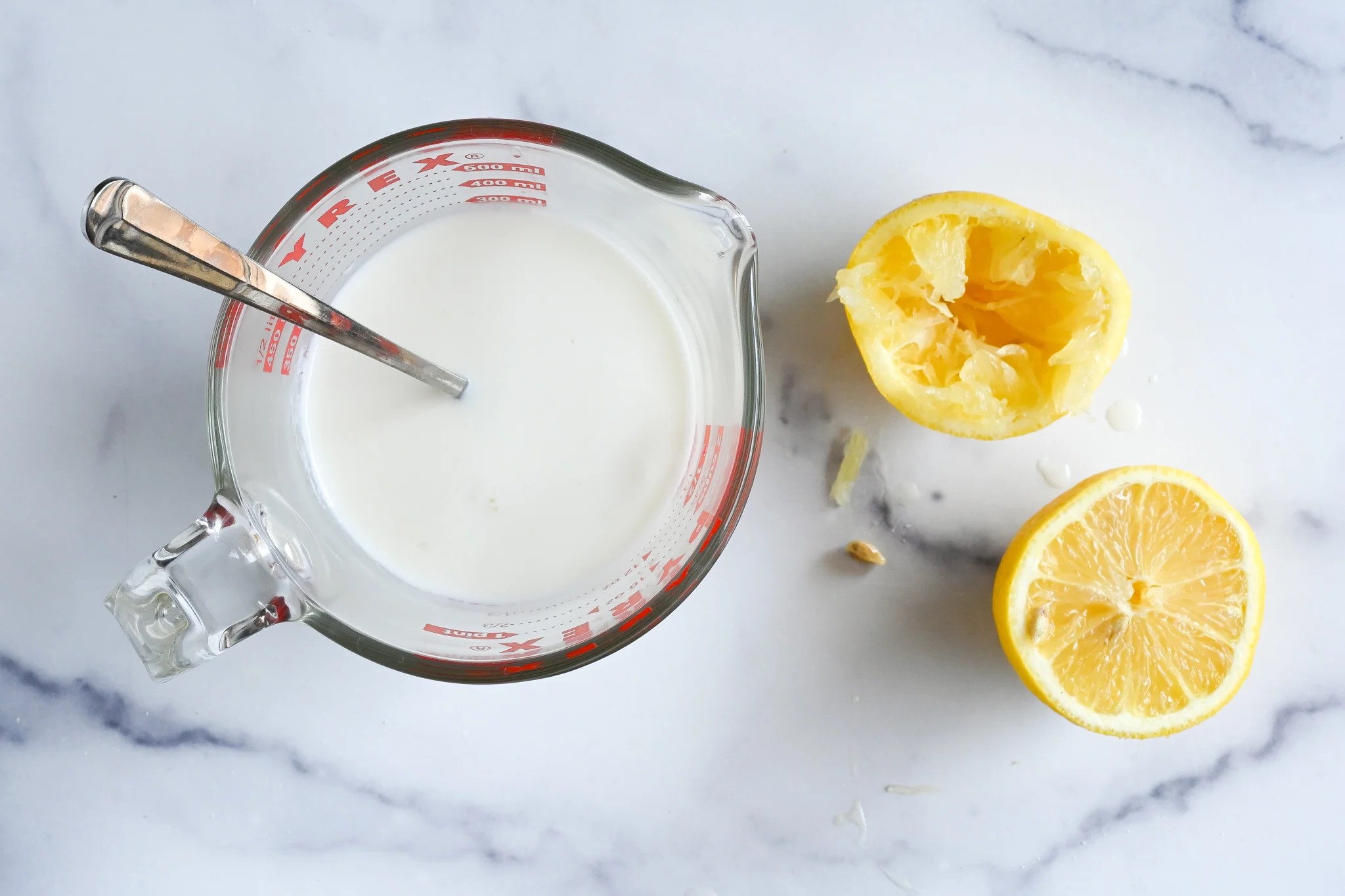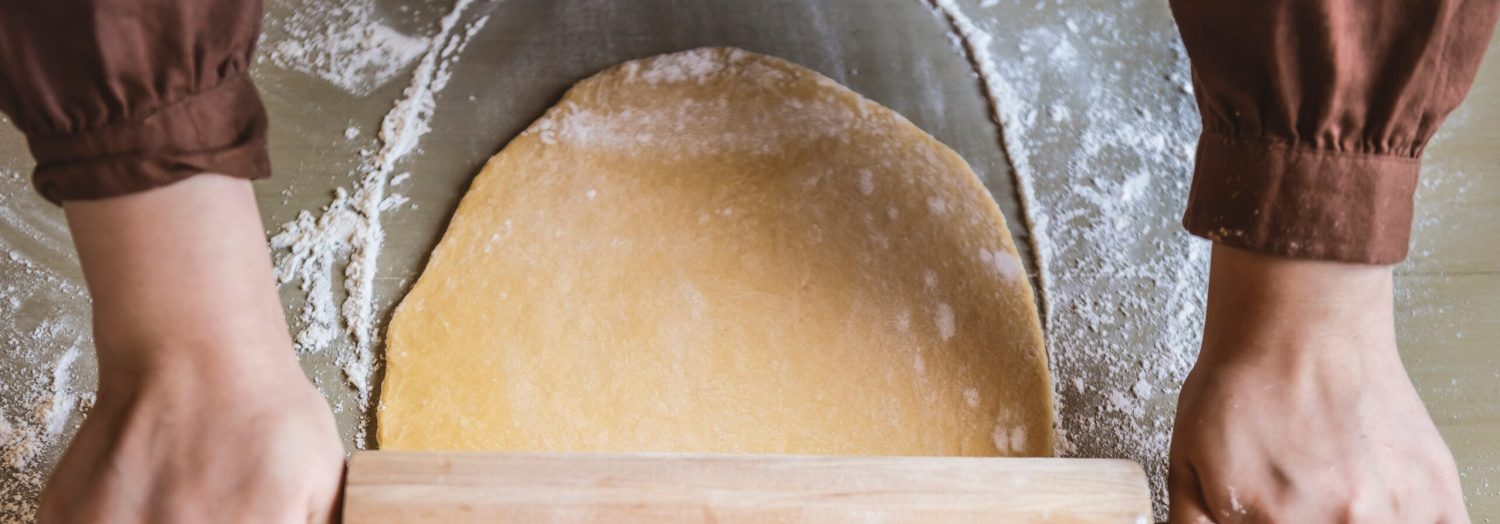Creating your own buttermilk at home is a simple and quick process that can save you a trip to the store. This homemade version is perfect for baking, cooking, or even adding a tangy twist to your favorite recipes. With just two basic ingredients, you can whip up a batch of fresh buttermilk in no time.
The ingredients for this recipe are quite common and likely already in your kitchen. However, if you don't have lemon juice or white vinegar, you'll need to pick one up at the supermarket. Both are essential for curdling the milk and creating the signature tangy flavor of buttermilk.

Ingredients for Buttermilk Recipe
Milk: The base of the recipe, providing the liquid needed to create buttermilk.
Lemon juice: An acidic ingredient that curdles the milk, giving it the tangy flavor characteristic of buttermilk.
White vinegar: An alternative acidic ingredient to lemon juice, also used to curdle the milk and create the tangy flavor.
Technique Tip for This Recipe
For a richer flavor, use whole milk instead of 2% milk. If you need a thicker consistency, let the mixture sit for a full 10 minutes. This will allow the lemon juice or vinegar to fully curdle the milk, giving you a more authentic buttermilk texture.
Suggested Side Dishes
Alternative Ingredients
1 cup whole or 2% milk - Substitute with 1 cup almond milk: Almond milk can be used as a non-dairy alternative, though it may slightly alter the flavor and consistency.
1 cup whole or 2% milk - Substitute with 1 cup soy milk: Soy milk is another non-dairy option that provides a similar texture to cow's milk.
1 tablespoon lemon juice or white vinegar - Substitute with 1 tablespoon apple cider vinegar: Apple cider vinegar can be used in place of lemon juice or white vinegar to create the acidic environment needed to curdle the milk.
1 tablespoon lemon juice or white vinegar - Substitute with 1 tablespoon cream of tartar: Cream of tartar can also be used to acidify the milk, though it may require additional mixing to fully dissolve.
Alternative Recipes Similar to This One
How to Store or Freeze This Dish
To store your homemade buttermilk, pour it into an airtight container or a clean glass jar with a tight-fitting lid. This will help maintain its freshness and prevent any unwanted odors from seeping in.
Place the container in the coldest part of your refrigerator, typically the back of the bottom shelf. This ensures that the buttermilk stays at a consistent, cool temperature, preserving its quality for up to 2 days.
If you plan to freeze buttermilk, pour it into ice cube trays. This allows you to thaw only the amount you need for a recipe, reducing waste. Once frozen, transfer the buttermilk cubes to a freezer-safe bag or container.
Label the container with the date of freezing. Buttermilk can be stored in the freezer for up to 3 months, but for the best flavor and texture, use it within the first month.
When you're ready to use frozen buttermilk, thaw it in the refrigerator overnight. If you're in a hurry, you can also place the container in a bowl of cold water to speed up the process.
After thawing, give the buttermilk a good stir or shake. The texture may separate slightly during freezing, but a quick mix will bring it back to its original consistency.
Avoid refreezing buttermilk once it has been thawed. This can affect its texture and flavor, making it less desirable for your recipes.
For best results, use thawed buttermilk in baked goods like pancakes, waffles, or biscuits. The slight change in texture won't be noticeable in these recipes.
How to Reheat Leftovers
- Pour the buttermilk into a microwave-safe container and cover it with a microwave-safe lid or plastic wrap. Heat on medium power for 15-20 seconds, then stir. Repeat if necessary until it reaches the desired temperature.
- Place the buttermilk in a small saucepan over low heat. Stir continuously to prevent curdling and heat until it’s warm but not boiling.
- If using the buttermilk in a baked recipe, simply add it cold as the baking process will naturally warm it up.
- For a quick warm-up, immerse the container of buttermilk in a bowl of warm water for a few minutes, stirring occasionally to ensure even heating.
Essential Tools for This Recipe
Measuring cup: Used to accurately measure the amount of milk needed for the recipe.
Tablespoon: Used to measure the exact amount of lemon juice or vinegar.
Stirring spoon: Used to mix the milk and acid together thoroughly.
Timer: Helps to keep track of the 5-10 minutes needed for the milk to curdle.
Refrigerator: Used to store the buttermilk if not used immediately.
Time-Saving Tips for This Recipe
Measure ingredients ahead: Prepare your milk and lemon juice or vinegar in advance to save time.
Use a timer: Set a timer for 5-10 minutes to ensure you don't forget to check when the milk has curdled.
Store extra buttermilk: Make a larger batch and store it in the fridge for up to 2 days to have buttermilk ready for future recipes.
Keep tools handy: Have a measuring cup and spoon within reach to streamline the process.

Buttermilk Recipe
Ingredients
Main Ingredients
- 1 cup Milk whole or 2%
- 1 tablespoon Lemon juice or white vinegar
Instructions
- 1. Pour the milk into a measuring cup.
- 2. Add the lemon juice or vinegar to the milk.
- 3. Stir well and let it sit for 5-10 minutes until it curdles.
- 4. Use immediately or store in the fridge for up to 2 days.
Nutritional Value
Keywords
More Amazing Recipes to Try 🙂
- Indian Tandoori Chicken Recipe45 Minutes
- Maryland Old Bay Crab Cake Dip Recipe30 Minutes
- Ham and Scalloped Potatoes Recipe1 Hours 20 Minutes
- Air Fryer Breaded Shrimp Recipe25 Minutes
- Japanese Egg Salad Sandwich Recipe20 Minutes
- Shrimp Etouffee Recipe1 Hours
- Crabbies Recipe20 Minutes
- Shrimp Egg Salad Recipe25 Minutes

Leave a Reply